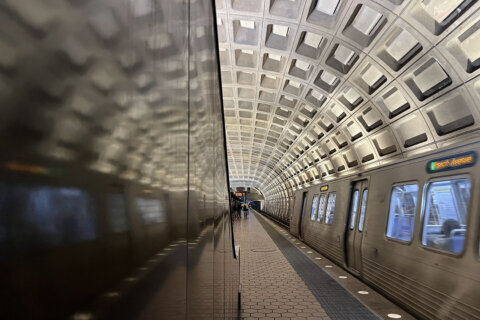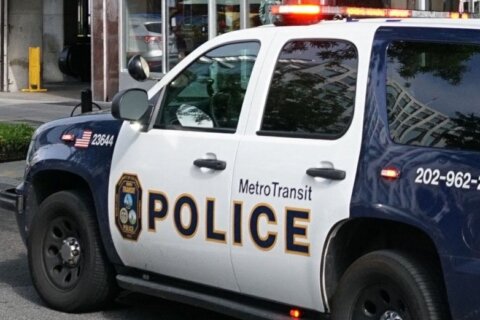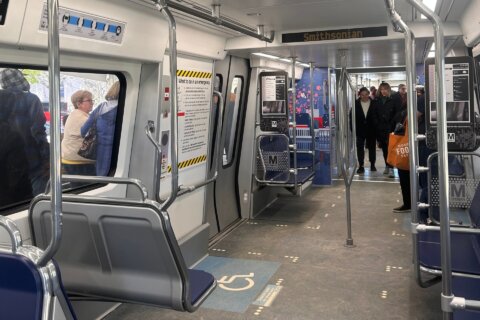WASHINGTON — Crumbling railroad ties on tracks just outside the area where crews wrapped up a two-week work zone are prompting safety slowdowns for trains on the Blue and Yellow lines, but Metro General Manager Paul Wiedefeld sees the speed restrictions as a sign of progress.
“The speed restrictions on the Blue Line have nothing to do with SafeTrack; that was not part of SafeTrack, but again I think it gets to the culture of the agency changing where people, instead of just ignoring that and saying, OK, we’ll get to it in the non-revenue service, it’s basically saying we can’t wait, we can’t risk it,” he said.
The speed restrictions were in place between Franconia-Springfield and Van Dorn Street from early Monday morning after Franconia-Springfield reopened following a weekend shutdown. During Monday evening’s rush hour, there were also speed restrictions for both Blue and Yellow line trains along much of the stretch beyond Van Dorn Street to the Pentagon.
Metro has already done other complete round-the-clock shutdowns of some of those stretches this summer, but Wiedefeld said the main issues in this case are outside of those work zones.
“There are issues with any construction project, [but] the vast majority of that work is very good. There are some issues, but that’s why we have two layers of, in effect, inspectors making sure that we get right on top of that as well,” Wiedefeld said.
Replacing rail ties without track shutdowns can be slow-going work, Metro has said, with just a handful replaced in a typical overnight shift.
Asked why the crumbling rail ties near Van Dorn Street were not included in the recent Blue Line work, Wiedefeld said Metro simply must prioritize the most pressing work needed across the system.
Deteriorated rail ties were among the reasons a Silver Line train derailed near East Falls Church in July. The investigation into that derailment includes potential criminal charges tied to skipped inspections or other actions.
While it takes years for rail ties to deteriorate, Metro is supposed to have no more than 10 feet between effective ties. In the case of the derailment, a switch area that should have had a minimum of 12 effective ties instead had none, but nothing was done about it.
Metro has not given the cause of a separate derailment this month where two cars completely left the tracks while going across a switch in a yard.
Riders on several lines have complained of delays in the days or weeks following a work zone, including problems on the Blue, Orange and Silver Lines that followed the June shutdown near Stadium-Armory.
More instances of unscheduled track work have been reported across the system recently too, when crews have moved to address track problems.
“Over the last month or so you have seen more of that, and that is a reflection of our employees saying ‘OK, this is a new day; when we see something we’re going to do something about it,’ and we want that. So in the short term, I get [the frustration], but long-term that’s exactly where we want to be,” Wiedefeld said.
A six-week track work zone begins Thursday on the Orange Line, with only a shuttle train running between West Falls Church and Vienna at nearly all times of day. At rush hour, that will cut rail service at Vienna and Dunn Loring to about a quarter of the usual level. All other stations are scheduled to have near-normal service.
Metro has not yet announced the revised schedule for the following work zones, which had been scheduled to include a three week shutdown of the Red Line between Fort Totten and NoMa-Gallaudet in October.
That work zone is now expected to include fixes for a bridge that holds up the outbound track near Rhode Island Avenue station after inspections found crumbling concrete there.
“We’ll be coming out [in the] next week or so with all of that, so we can give people at least 30 days to get ahead of that,” Wiedefeld said Monday.







